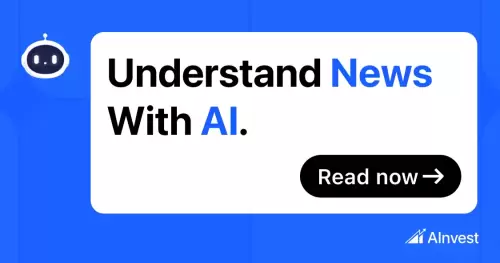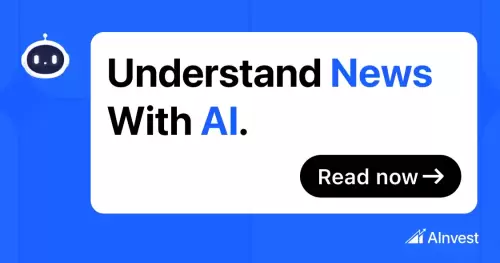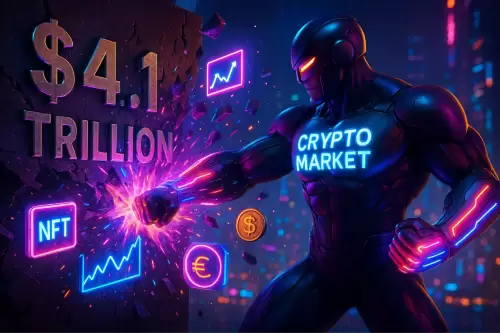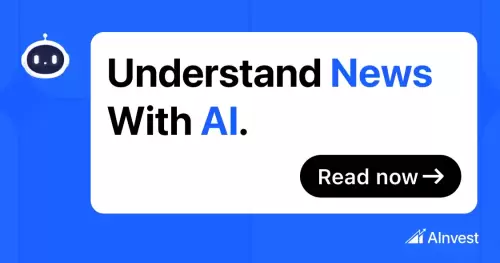 |
|
 |
|
 |
|
 |
|
 |
|
 |
|
 |
|
 |
|
 |
|
 |
|
 |
|
 |
|
 |
|
 |
|
 |
|
Cryptocurrency News Articles
Tether to Open-Source Its Bitcoin Mining Software by 2025
Jun 11, 2025 at 06:05 pm
According to Tether CEO Paolo Ardoino, the goal is to help more mining companies enter the market and to strengthen the Bitcoin network by making it more decentralized.

Tether, the company behind USDT, plans to open-source its Bitcoin Mining OS (MOS) by Q4 2025, making it easier for smaller miners and businesses to start their own operations without needing third-party services.
The goal is to help more mining companies enter the market and to strengthen the Bitcoin network by making it more decentralized, according to Tether CEO Paolo Ardoino. When more miners are involved, control of the network becomes less concentrated in the hands of a few big players. This improves Bitcoin’s overall security and resilience.
In a post shared on X, Ardoino stated that the open-source release will spawn a new wave of mining activity.
“We're making our Bitcoin mining OS (MOS) completely open-source in Q4 2025! Smaller miners and businesses can now easily start their own mining operations. No need to rely on commercial software or external hosting providers. A more diverse and competitive ecosystem is born,” he announced.
This move is expected to create a more level playing field between established corporations and smaller operators who might face higher barriers to entry.
MOS can be used on small-scale systems like a Raspberry Pi connected to a few mining rigs, or on large-scale deployments across industrial mining farms. It will also feature native support for a variety of popular mining hardware and container systems, including both air-cooled and immersion-cooled setups.
In addition, the platform will integrate with a range of electrical components and environmental controls such as thermostats and power systems, allowing operators to manage their equipment efficiently and maintain high-performance mining operations.
For software developers, MOS will support the creation and addition of custom plugins tailored to specific hardware or operational requirements. Tether welcomes contributions to the core software, intending to foster a growing community of developers enhancing the system over time.
"Any mining operator—small or large—will be able to build a self-hosted management system with the open-source MOS codebase," said Giw Zanganeh, Tether's Vice President of Energy and Mining. "This gives miners complete control over how they monitor, maintain, and optimize their operations, without being locked into commercial software ecosystems."
Zanganeh is confident that MOS's core design makes it an ideal candidate to evolve into a standard mining solution across the industry. As more users adopt the system and contribute to its development, it may become the go-to software for managing Bitcoin mining infrastructure.
Tether's work on MOS fits into a broader strategy aimed at strengthening decentralized infrastructure within the Bitcoin ecosystem. Earlier in April, the company partnered with Ocean, a mining pool focused on promoting open participation in block production.
As part of that partnership, Tether committed to allocating hashrate—the measure of mining power—from both its existing and future operations to the Ocean pool. This shift is intended to reduce the concentration of mining power, allowing a more diverse group of participants to contribute to Bitcoin block validation. By spreading control more evenly, Tether and Ocean hope to enhance the fairness, security, and transparency of the network.
Another aspect of the project includes the planned integration of Tether's decentralized AI platform, QVAC, into MOS. The AI will be used to analyze operational data from mining activities, generate intelligent reports, and optimize hardware performance. This capability could be particularly useful for optimising energy consumption and reducing operational costs.
Tether also sees potential in supporting renewable energy users. Many small to midsized enterprises generating their own electricity—especially solar—could use MOS to direct surplus energy into mining. This would allow them to monetize renewable energy generation and contribute to the security of the Bitcoin network.
While Tether continues to expand its role in mining and infrastructure, the company has clarified that it has no plans to pursue a public listing. Ardoino recently dismissed the idea of an initial public offering, downplaying speculation and describing suggested valuations as conservative for Tether's position in the market.
Disclaimer:info@kdj.com
The information provided is not trading advice. kdj.com does not assume any responsibility for any investments made based on the information provided in this article. Cryptocurrencies are highly volatile and it is highly recommended that you invest with caution after thorough research!
If you believe that the content used on this website infringes your copyright, please contact us immediately (info@kdj.com) and we will delete it promptly.






























































